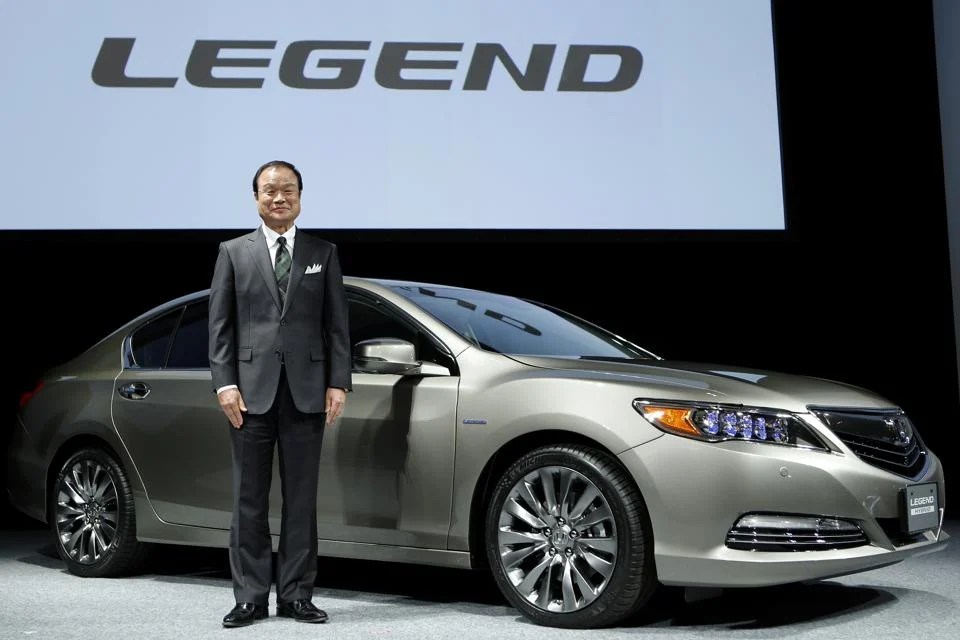What S Truly Going On In Malaysia S Motor Industry

On the surface, it’s business as usual for Malaysia’s motor industry. After all, Perodua is already taking online bookings for its recently launched SUV. But what’s really going on is that Malaysia is going to miss out on the new wave of electric vehicles (EV) and autonomous vehicles, while regional competitors such as Indonesia roll out new investor-friendly policies that include EVs.
Perodua’s new Ativa is the first compact SUV produced by Daihatsu Japan and one that is based on the Toyota Raize which was launched in Japan last November.
As a compact SUV, this model goes forward with the next-generation Daihatsu New Global Architecture platform, featuring a 1.0 litre 3-cylinder turbocharged engine and a fuel-sipping consumption of 18.9 km/litre.
It is estimated that prices will start from RM62,000 to a range-topping RM72,000. That aside, expect about 50 to 70 new cars to be launched throughout the year.

Malaysia is missing out on the electric vehicle wave. (Rawpixel pic)The new cars set to be launched this year were conceived about three years ago, and their market roll-out will likely go on as scheduled despite Covid-19 pushbacks and global vaccinations.
Car buyers will continue to be saddled with high car taxes and will receive the latest car technologies only after Thailand and Indonesia.
But since Prime Minister Muhyiddin Yassin can pull off a pleasantly stunning policy to accelerate the roll-out of 5G telecommunications and launch Malaysia to the forefront in Asean, perhaps the same could be done with a liberalisation and decarbonisation policy to revolutionise the automotive industry in Malaysia.
The automotive industry is definitely a low-hanging fruit for improvement.

With the Zhejiang Geely group as Proton’s partner, the latter’s chances of becoming an established regional brand are quite high. (AFP pic)Proton has an impressive range of products that can easily establish the brand as a regional competitor, especially since it has the Zhejiang Geely group as a technology-rich partner.
While the government will still need to underpin the domestic auto market to a regional market, its support should be evenly distributed, unlike previously where Proton had the privilege of receiving exclusive R&D grants.
With Malaysia acceding to the world’s largest free trade agreement that is the Regional Comprehensive Economic Partnership (RCEP) in November last year, it has also accepted competition from China, Japan and South Korea.
The distinguishing feature this time is that Malaysia’s free trade list includes cars and electric vehicles with a 30% import duty unlike the superseded Asean Free Trade Area (AFTA).
While there are other trade barriers to navigate in the RCEP such as excise duties which are within a country’s right to impose, a senior official at the international trade and industry ministry said the single biggest obstacle to free trade in cars is that the RCEP has yet to be signed off by Malaysia’s Cabinet.
But while this is not news to most industry participants, what this means for Malaysian car buyers is that they are being left behind in terms of choice, pricing and technology.
For instance, Honda’s latest big thing is its “Traffic Jam Pilot” technology which will be launched with its flagship Honda Legend by the end of March in Tokyo.

The Honda Legend will be launched in March 2021, with the “Traffic Jam Pilot” functionality. (Bloomberg pic)It will be the first car in the world able to operate nationwide using “Level 3” autonomous driving technology. “Level 0” means no driver assistance while “Level 4” means total automation of the driving of a car.
While adaptive cruise control is available on even the Mercedes-Benz S400 hybrid and other premium cars in Malaysia, they are on “Level 2” software which steers cars to stay in a lane, follow the vehicle in front, and brake and accelerate when needed.
“Level 3”, however, goes beyond “Level 2” in that the car can take over all safety-critical functions in some cases. This is known as “conditional autonomy”, and it operates without driver supervision.
Japan’s advantage over the US and China in the area of autonomous driving is due to incisive strategy and execution.
This was analysed by Eri Sugiura, reporting in Nikkei Asia, who stated: “To boil it down, it takes more than just advanced technology to bring self-driving vehicles into everyday use.”
The story also pointed out how Germany’s Audi was the first to unveil the “Traffic Jam Pilot” technology in 2017 but did not equip its cars with its “Level 3” functionality or “conditional autonomy” due to regulatory reasons.

The Audi A8, which had the “Traffic Jam Pilot” technology but not a “Level 3” functionality. (Audi pic)Thanks to deregulation moves by the Japanese government, Honda will be the first manufacturer to launch a car with “Level 3” technology that is allowed to operate nationwide.
Sugiura’s report said “Both Honda and Japan’s government clearly see a major opportunity to re-enter the game. The launch is the culmination of a six-year effort to modify the country’s road traffic legal code, regulatory framework and insurance industry in the service of commercialising “Level 3 self-driving” technology at a national level – not to mention the tolerance of Japan’s citizens to be guinea pigs in an extraordinary experiment with robotics.”
Where Malaysia is concerned, there could still be a way out of the political imbroglio, says Shahrol H, a consultant who has worked at the top levels of Malaysia’s civil service for quite a while.
“For an EV policy, a political cover would be needed because it’s a very big shift,” he said in a Clubhouse chatroom just recently.
What can immediately be done, he added, is to probably set up another government body similar to what the Thais did when they set up their National Electric Vehicle Steering Committee, chaired by the deputy prime minister.
Then, the committee should be given the teeth to do what it should do.
According to Shahrol, it really is all about the committee’s effectiveness, clear rules, governance and transparency. But the prime minister himself must direct it and set the wheels in motion.
“It’s like a CEO who wants to do something and initiates the plan. Fixing the auto industry is not really rocket science,” said Shahrol.- FMT
The views expressed are those of the writer and do not necessarily reflect those of MMKtT.
Artikel ini hanyalah simpanan cache dari url asal penulis yang berkebarangkalian sudah terlalu lama atau sudah dibuang :
http://malaysiansmustknowthetruth.blogspot.com/2021/03/whats-truly-going-on-in-malaysias-motor.html?utm_source=feedburner&utm_medium=feed&utm_campaign=Feed%3A+MalaysiansMustKnowTheTruth+%28Malaysians+
 PING BABAB : Raksasa Aggregator Malaysia
PING BABAB : Raksasa Aggregator Malaysia

 Malaysia is missing out on the electric vehicle wave. (Rawpixel pic)The new cars set to be launched this year were conceived about three years ago, and their market roll-out will likely go on as scheduled despite Covid-19 pushbacks and global vaccinations.
Malaysia is missing out on the electric vehicle wave. (Rawpixel pic)The new cars set to be launched this year were conceived about three years ago, and their market roll-out will likely go on as scheduled despite Covid-19 pushbacks and global vaccinations. With the Zhejiang Geely group as Proton’s partner, the latter’s chances of becoming an established regional brand are quite high. (AFP pic)Proton has an impressive range of products that can easily establish the brand as a regional competitor, especially since it has the Zhejiang Geely group as a technology-rich partner.
With the Zhejiang Geely group as Proton’s partner, the latter’s chances of becoming an established regional brand are quite high. (AFP pic)Proton has an impressive range of products that can easily establish the brand as a regional competitor, especially since it has the Zhejiang Geely group as a technology-rich partner. The Honda Legend will be launched in March 2021, with the “Traffic Jam Pilot” functionality. (Bloomberg pic)It will be the first car in the world able to operate nationwide using “Level 3” autonomous driving technology. “Level 0” means no driver assistance while “Level 4” means total automation of the driving of a car.
The Honda Legend will be launched in March 2021, with the “Traffic Jam Pilot” functionality. (Bloomberg pic)It will be the first car in the world able to operate nationwide using “Level 3” autonomous driving technology. “Level 0” means no driver assistance while “Level 4” means total automation of the driving of a car. The Audi A8, which had the “Traffic Jam Pilot” technology but not a “Level 3” functionality. (Audi pic)Thanks to deregulation moves by the Japanese government, Honda will be the first manufacturer to launch a car with “Level 3” technology that is allowed to operate nationwide.
The Audi A8, which had the “Traffic Jam Pilot” technology but not a “Level 3” functionality. (Audi pic)Thanks to deregulation moves by the Japanese government, Honda will be the first manufacturer to launch a car with “Level 3” technology that is allowed to operate nationwide.






















